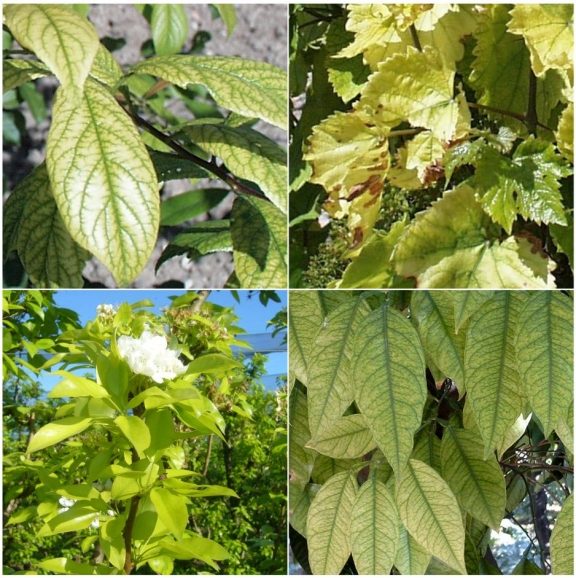You are here
Avoiding or solving iron deficiency with only foliar applications. Is it possible?

Iron deficiency is a main concern of many farmers. Fruit growers and winemakers in particular, are facing regularly problems of iron deficiency in their crop. The consequences are drastic:
- Lower yield
- Lower quality
- Lower sugar content in the fruits
- Smaller fruits
Your crop is probably suffering from an iron deficiency if it shows any of the following symptoms.
You can recognize an iron deficiency easily
- The leaves turn yellow.
- Especially the youngest leaves, at the end of the new shoots.
- The yellowing expands and leads to necrosis of the leaves.
- The young shoots dry out completely. Older leaves turn completely yellow.
An iron deficiency has various causes
- Many fruit and wine producing regions in Europe have calcareous soils: high pHs and high concentrations of active lime can cause iron deficiency.
- In more temperate climates, root pruning, phosphorus fertilization and liming are often the cause of the iron deficiency.
- Bad drainage and frost damage can also be a cause.
- The wrong choice of rootstock and/or variety (not adapted to the soil and/or climate) is often the reason why deficiencies are more persistent and frequent.
All these factors reduce either the plant availability of the iron in the soil, or reduce the plant's ability to absorb this nutrient from the soil.
Mostly the iron deficiency doesn’t come alone
The above risk factors also affect some other the nutrients. Manganese, zinc and boron are less available in these circumstances. But, generally we don’t observe the symptoms of these secondary deficiencies because the symptoms of the iron deficiency are dominant. Nevertheless it results in serious nutritional imbalances of the fruit trees and vines. Vigilance is required.
The solution: a complete approach with foliar applications
The traditional applications of iron chelates to the soil (EDDHA) only nourish the plant with iron and are therefore not always satisfactory.
The BMS MN team developed an efficient program with foliar applications of Chelal Fe and Chelal RD NF combined:
- It provides iron in sufficient quantities.
- It also nourishes the plant with other trace elements, in smaller quantities.
With this simultaneous application you will achieve an optimal result. It deals with both the primary iron deficiency and the secondary deficiencies of zinc and manganese.
How to respond effectively?
Treat your crop 2 to 3 times with the combination of Chelal Fe and Chelal RD NF, in the following proportion:
- 0,5 - 1 kg CHELAL RD NF / ha
- 1 - 2 L CHELAL Fe / ha
Followed by 2 to 4 treatments with only 1 - 2 L CHELAL Fe / ha.
Start the treatments immediately when the first symptoms of the deficiency appear. Or take a preventive action on the fields where deficiencies occur frequently, or where circumstances are less favourable.
What are your benefits with these foliar applications?
This foliar fertilisation program avoids and treats iron deficiencies. This way you are assured of a good quality yield, with a high sugar content, and an optimal fruit size.
In addition, this program provides 6 other benefits:
- You simultaneously control the iron deficiency and the secondary deficiencies of zinc, manganese and boron
- You ensure a balanced nutrition of your crop
- The plant absorbs and distributes the nutrients quickly and efficiently throughout the plant. This is the main advantage of the complete chelation of our products.
- You avoid possible fixations and blockages in the soil because you apply the nutrients foliar.
- The plant is green until the end of the season. This ensures better shoot formation at the start of the next season.
- You save time: our products are miscible with most plant protection products. You can therefore apply all products together avoiding thus an extra passage.
Would you like personal advice for your crop? Please contact us, we’ll turn challenges in opportunities.